How To: Cherimoya Pollination
So easy you wish you had done it sooner. This will also work for some of the other Anonas also, like the sweetsop.
Materials:
There are two things you will need, a film canister (or something of similar size, preferably black to better see the pollen, small and easy to hold) and a #2 (or #3 brush, preferably made of organic hairs which makes the pollen stick to them easier).
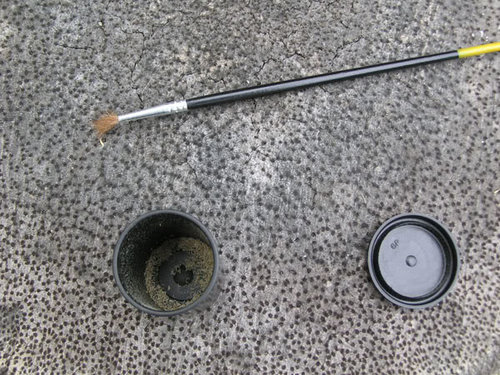
Now we will identify the different male/female flower stages. The female stage will come first then followed by the male stage.
Male Flower:
Well take a look at the male stage first so we can identify the parts. The anther (thin and lengthy, falls right off) produces pollen and the stigma (right in the middle and round) will receive the pollen during fertilization. At this stage the petal separates all the way. The anthers will have loosened up and will be producing pollen. However at the male stage, the stigma is no longer receptive. Therefore it rarely self pollinates depending on location/climate. The best time to collect pollen is when the anthers are still a creamy color and the petals are still firm/upright. Once the anthers become darker and the petals wilt, the pollen are no longer as effective.
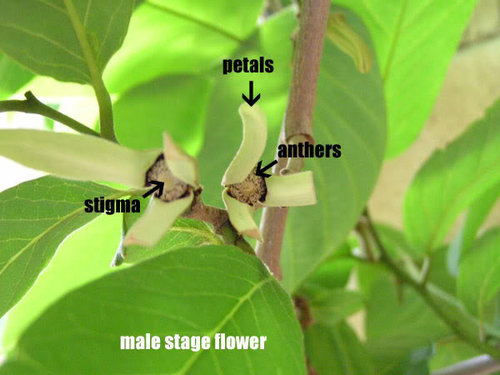
Female Flower:
Notice the separation of the petals and how it is not open all the way. The stigma is hidden by the petal. It is a reason why bees canÂt get to the flowers to pollinate them. If you gently open the flower at this stage, you will notice that the anthers are tightly held to the flower with no pollen. At this stage is when the blooms are fragrant.
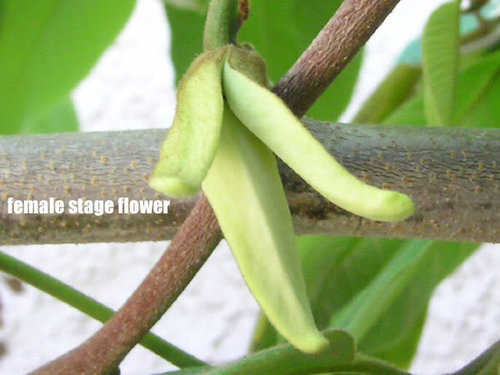
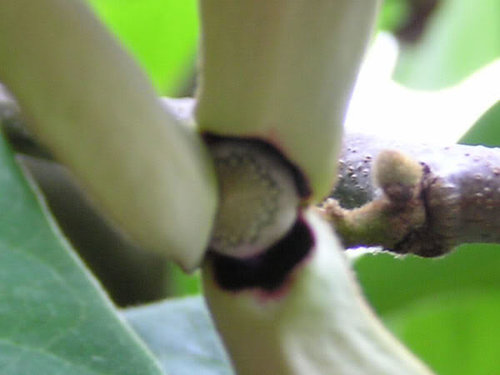
Timing:
When is the best time to go out there and start pollinating the flowers? IÂm in Southern California area, so I do not know if this may differ for you depending on location. ItÂs best to start when you have changes between the male and female stage. This appears to occur at about 1 ½ hr before noon and once again at about 2hrs until sunset with the majority of the change happening here. At these times you will find male and female flowers. When the flowers first open up at the female stage, you have about 24hrs before it becomes a male flower. The male stage last only about 1 hr to 1 ½ hr, the anthers along with pollen will deteriorate quickly.
Collecting/Pollinating/Storing
Collecting:
During the male stage bloom, take the film canister and brush off all the anthers into it. Notice the tiny dust that falls off with the anthers, that will be the pollen youÂll be using, not the anthers.
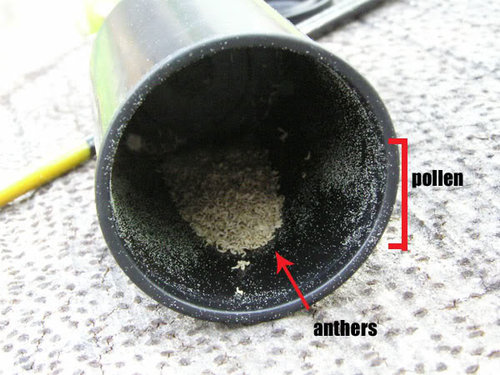
Pollinating:
Now take your brush to pick up some of the pollen. Then gently open up the female stage blooms, place the brush upon the stigma and gently twirl the brush to spread the pollen across the stigma.
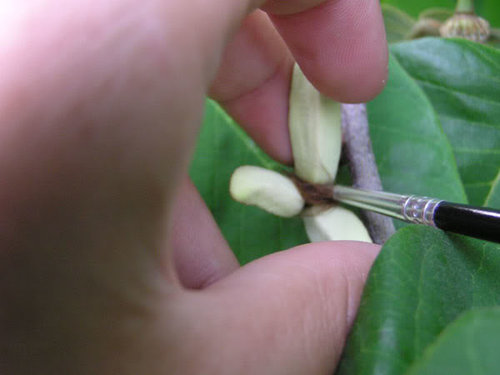
Storing:
So what happens if you donÂt have any flowers at the female stage, well the pollen is still effective (not as great) but still effective for about 24 hrs stored in the fridge. After 24 hrs, just discard any pollen left, the effectiveness is so low its no longer worth it.
Marking the Blooms:
To make sure you donÂt pollinated the flower more than once, some people will mark blooms with a sharpie or some other instrument. I simply break off two of the petals. This way even when the petals have dried up, you can take a look at it and still see if it was one of the flowers you pollinated. I like this method because itÂs a good self assurance that says "hey, I actually did have a hand in this fruiting."
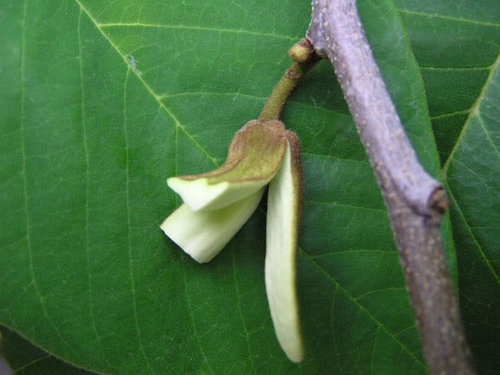
Well that's it. I hope this helps any first time cherimoya pollinators. Its pretty much cherimoya blooming season right now. I'll try to keep the pictures up as long as possible. Feel free to save them if needed.



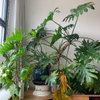
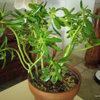

patusho25
racor_2006
Related Discussions
Pollination, how-to?
Q
Id Atemoya or Cherimoya variety
Q
Cherimoya from seed with 1st and only flower
Q
that time of year...
Q
rolfast
tomas
margarita10
ohiojay
tran
jimc25
ohiojay
tex56
asigal_hotmail_com
ohiojay
Lars
MohammadLawati
Lars
lyetstan
xin